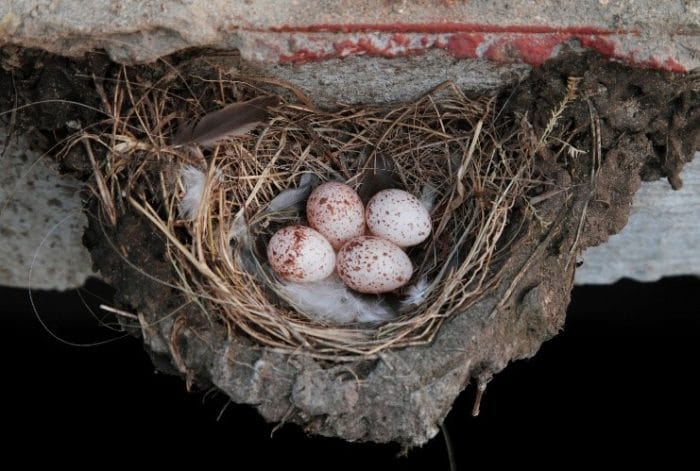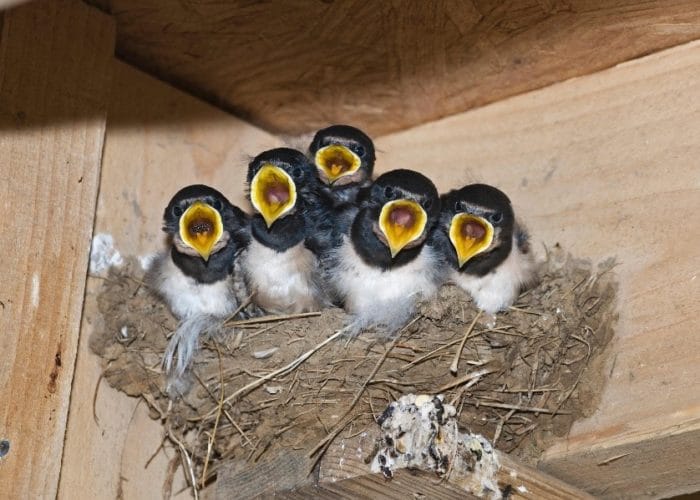One Swallow Does Make a Q Summer…
Sunday 27 June 2021
Following on from her previous articles, Miss Langdon, Visa Co-ordinator at Queenswood, tells us about her favourite summer visitor to Q - the Swallow. We hope that you enjoy her fascinating observations and that you manage to catch a glimpse of this remarkable bird over the summer holidays.
I know I should not have favourites but I must say that the bird I love the most is the Swallow. Perhaps more associated with summer, but to me the spring season is not complete until the swallows return after their epic journey.
The Swallow is not only a beautiful little bird but I love it for its tenacity and extraordinary navigational skills. As I say, this little bird also has links with the beautiful season of summer and long hot days (well we can hope in the UK – and to be honest in recent years, we have been having some hot summers). But the thing that I love the most is its remarkable ability to navigate half way across the world. I know that other summer migrants do the same but there is just something about the little Swallow that puts it right at the top of my list.
As former poet laureate Andrew Motion notes: "You would have to be very dull of soul indeed not to be moved by the life of the Swallow. We time our seasons by its coming and going, in an absolutely primitive and very ancient kind of way—it’s in our bones."
If all goes well for those little birds and they survive all the challenges they face every moment of their lives, they will fly back to the UK every spring and will arrive back in the near vicinity of where they were born. Some actually return to the actual nest they were born in. This has been proven by ringing birds. It is one of the most unbelievable and astounding feats in nature. I am in total awe of this little bird.
Yet why do swallows bother to fly all the way here in the first place? Wouldn’t they be better off staying put in Africa? There are three reasons they do so: more daylight, more food and far less competition. By travelling to our northerly latitudes, swallows can take advantage of our long summer days, the resulting abundance of insect food and, most importantly of all, not having to compete with the many other species of swallow resident in the southern hemisphere.
At Queenswood, they nest in the bothy – the shed near the gardens close to the tennis courts. Every spring I look forward to seeing them back again – not necessarily always the same birds but certainly descendants. I am always pestering the gardeners to tell me when the swallows are back and if they have started their families.
As soon as they return, in late March and early April, they get down to the serious business of raising a family. The males arrive before the females, to secure the best territories; once the females get back, the males sing and display to them. All other things being equal, the males with the longest tails are usually most successful at attracting a mate.
Once paired up, the birds will build a nest or repair an existing one. This is a loose and untidy assemblage of grass, hair, mud and feathers, often perched precariously on a wooden beam, in which the female will lay four or five cream-coloured eggs, speckled with reddish-brown.

The female sits tightly on her precious clutch for roughly two weeks, until the eggs hatch out. Then, the real work begins: for the next three weeks, the pair must bring back up to 8,000 insects every single day, to feed their hungry and demanding chicks.

I am always sad to see them leave at the end of summer but long for their return the following spring.
When you go on your summer holidays in a week or so for a period of 8 weeks, just remember that at the start of your holiday, hopefully lots of little birds will hatch out of tiny little eggs and within a month they will have fledged and learnt to fly. Within a further month, they will gather together with many other swallows and then they head off to South Africa. No Sat Nav on their phone to help them – just instinct.
How they manage to undertake such incredible journeys baffled our ancestors; indeed, many early naturalists — including Gilbert White — struggled to believe in the concept of migration at all. Alternative theories included the notion that swallows hibernated in caves, at the bottom of ponds, or even flew to the moon and back. It wasn’t until the mid-19th century that the truth — that these birds, weighing less than an ounce, undertake a global trip of more than 12,000 miles — was finally proved beyond doubt.
Long may they continue to thrive at Queenswood and so too all the other birds we are lucky to have in our midst. I wish everyone a lovely summer break and happy birding!
